Abstract
We describe Franck-Condon simulations of vibrational cooling effects on absorption difference spectra in chlorophyll a (Chl a). The relative contributions of vibrational equilibration in the electronic ground and excited states depend on the pump and probe wavelengths. For Franck-Condon-active vibrational modes exhibiting small Huang-Rhys factors (S < 0.1, characteristic in Chl a pigments), vibrational thermalization causes essentially no spectral changes when the origin band is excited. Significant spectral evolution does occur for S < 0.1 when the 0-1 and 1.0 (hot) vibronic bands are excited. However, vibrational equilibration in these cases causes no spectral shifting in the empirical photobleaching/stimulated emission band maximum. This result bears on the interpretation of time-resolved absorption difference spectra of Chl a-containing antennae such as the Chl a/b light-harvesting peripheral antenna of photosystem II.
Full text
PDF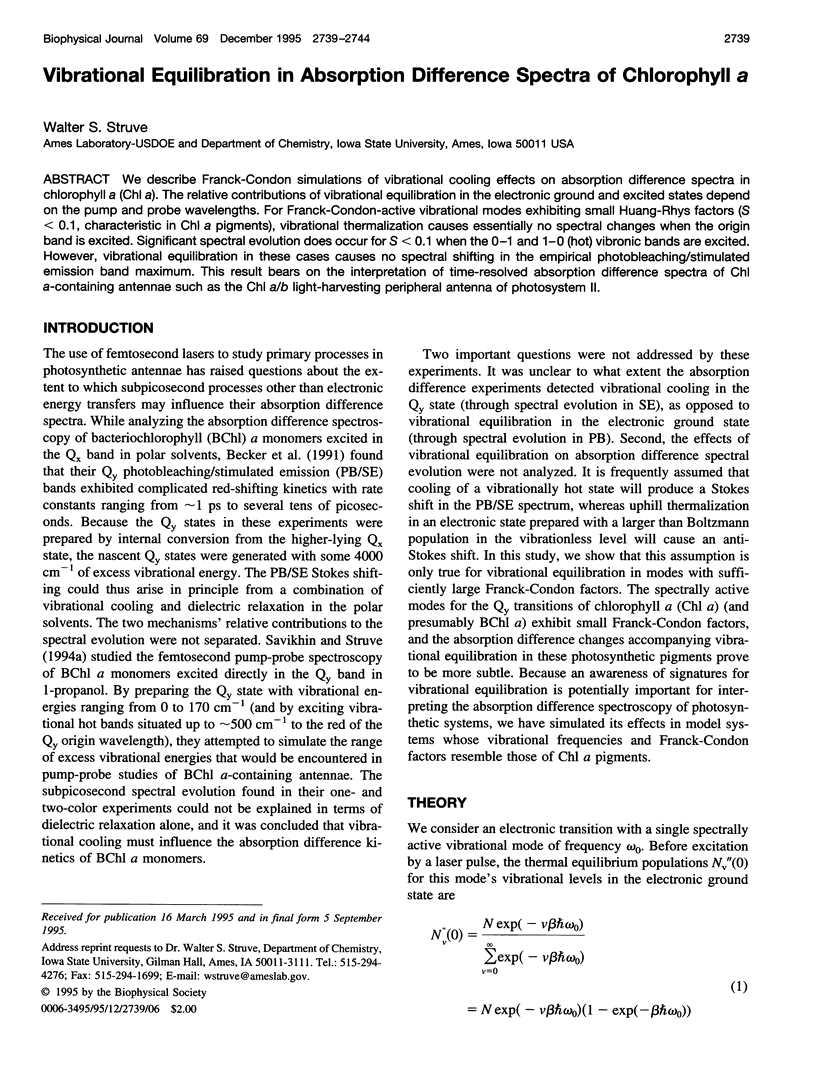
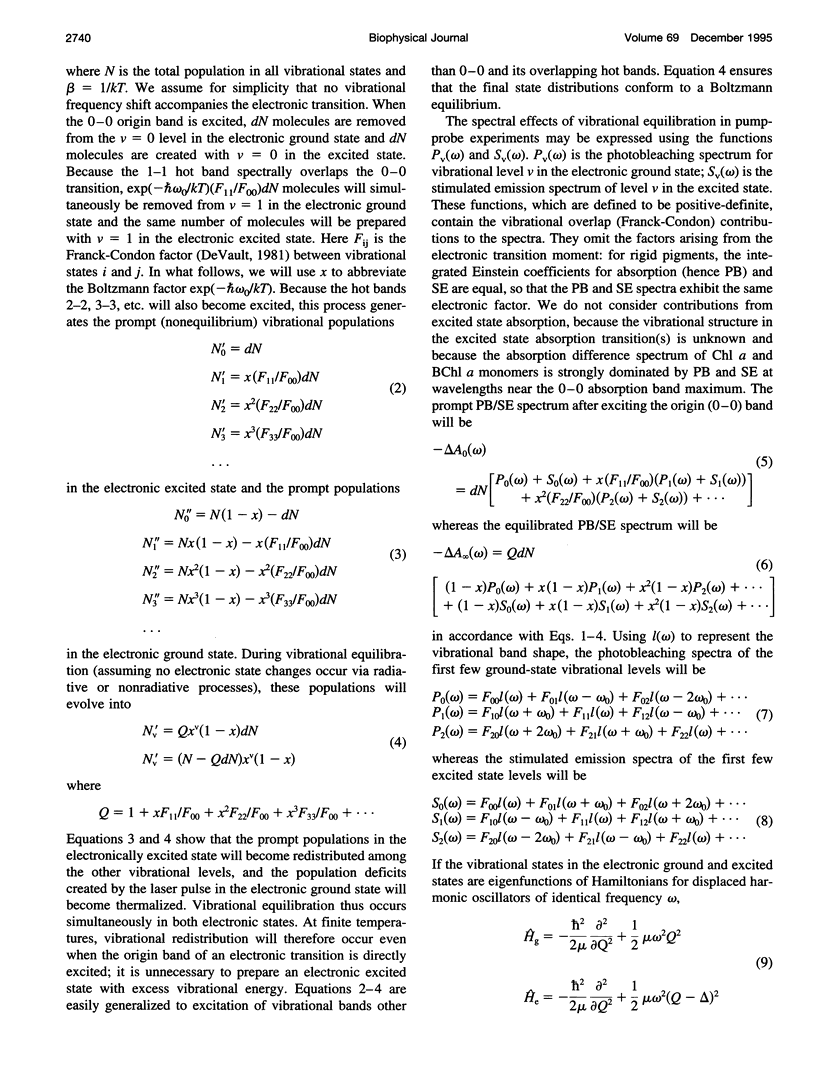
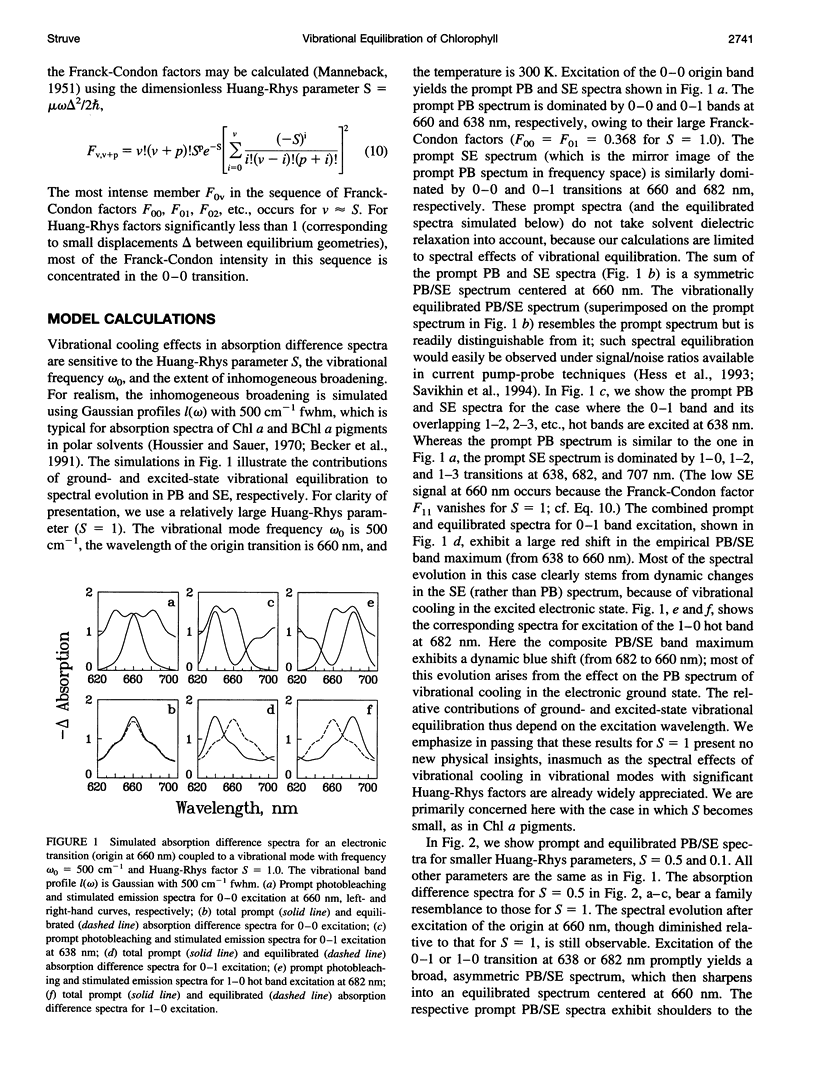
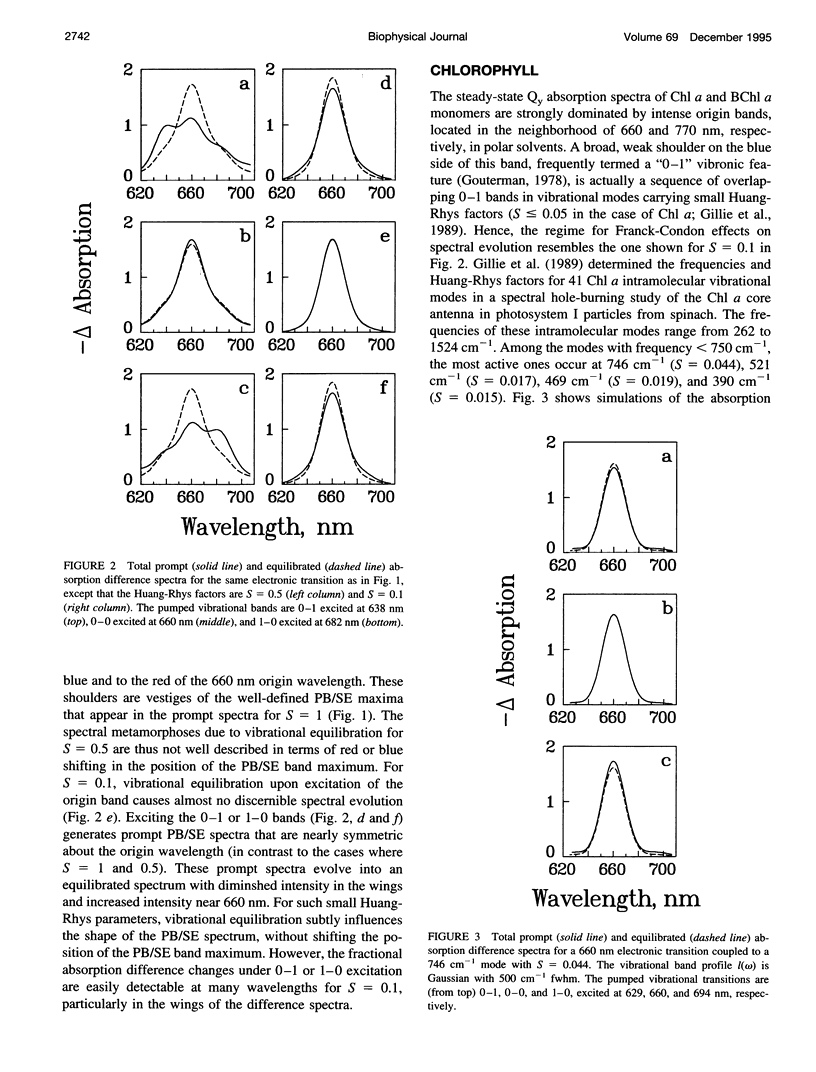
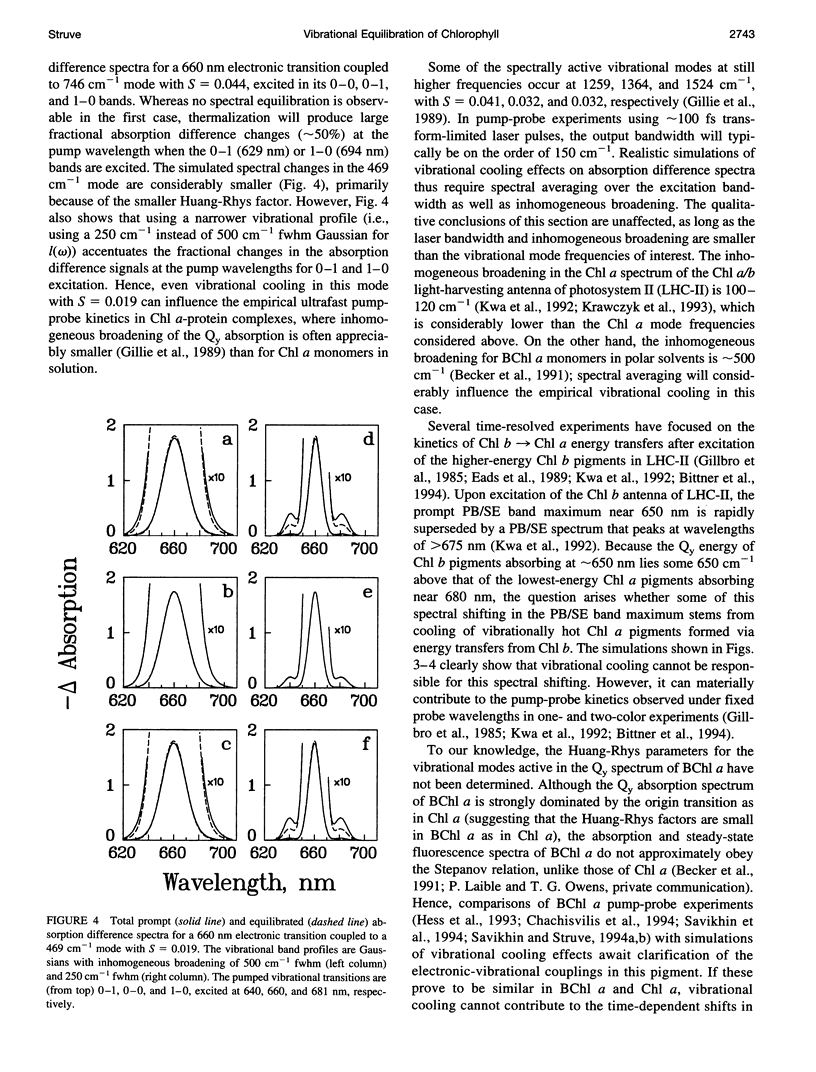
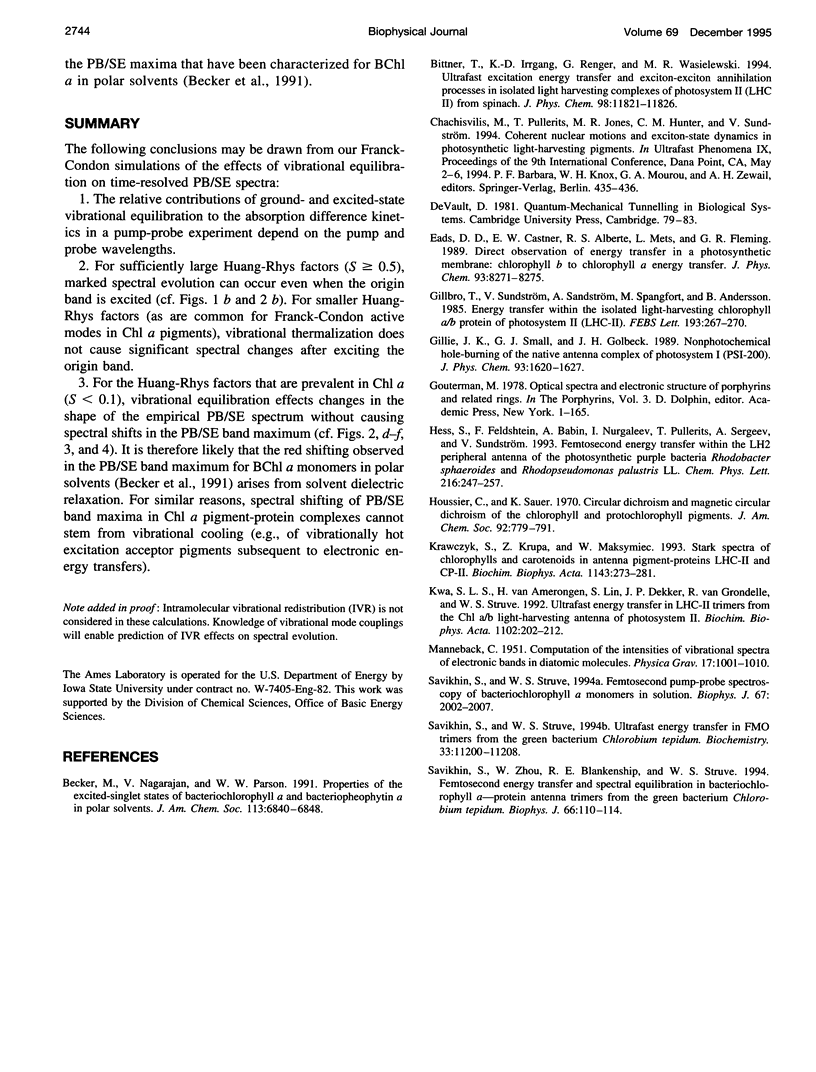
Selected References
These references are in PubMed. This may not be the complete list of references from this article.
- Savikhin S., Struve W. S. Femtosecond pump-probe spectroscopy of bacteriochlorophyll a monomers in solution. Biophys J. 1994 Nov;67(5):2002–2007. doi: 10.1016/S0006-3495(94)80683-6. [DOI] [PMC free article] [PubMed] [Google Scholar]
- Savikhin S., Struve W. S. Ultrafast energy transfer in FMO trimers from the green bacterium Chlorobium tepidum. Biochemistry. 1994 Sep 20;33(37):11200–11208. doi: 10.1021/bi00203a016. [DOI] [PubMed] [Google Scholar]
- Savikhin S., Zhou W., Blankenship R. E., Struve W. S. Femtosecond energy transfer and spectral equilibration in bacteriochlorophyll a--protein antenna trimers from the green bacterium Chlorobium tepidum. Biophys J. 1994 Jan;66(1):110–113. doi: 10.1016/S0006-3495(94)80769-6. [DOI] [PMC free article] [PubMed] [Google Scholar]


